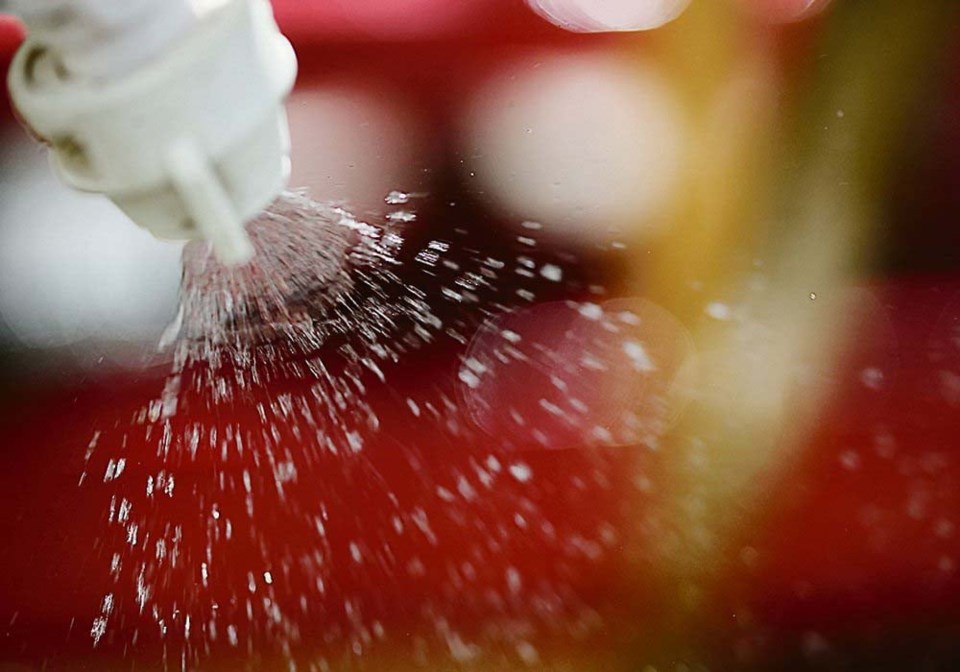WESTERN PRODUCER — Glyphosate is registered for pre-harvest weed control in many Canadian crops.
But with public and food industry attention on the herbicide, applying it to a crop in August is still a major market risk for farmers and Canada’s grain trade.
For instance, it can be sprayed on pulse crops to control weeds, because maximum residue limits (MRLs) for glyphosate are well-established in Canada’s major markets for pulse crops, said Greg Hartley, director, crop protection with Pulse Canada.
Unfortunately, it’s more complicated than an MRL.
“(In some markets), glyphosate MRLs are typically at a level that’s higher than the Canadian MRLs, right now. That being said… it’s still a marketing risk. Whether it’s due to consumer perception or market-driven factors, where it’s a buyer placing potential restrictions,” he said. “This is a big concern. We do see more companies pushing towards glyphosate-free.”
Bartley made the comments during an Aug. 1 webinar hosted by Keep It Clean — an initiative of the Canola Council of Canada, Pulse Canada, Cereals Canada and the Prairie Oat Growers Association.
Keep It Clean has a mandate to help Canadian farmers produce more market-friendly crops, by providing information on the risks associated with certain pesticides and practices.
All three speakers for the webinar mentioned glyphosate, which some farmers use late in the growing season to control weeds. Or possibly to dry down their crop.
“If you are using it as a desiccant to dry down that crop — please stop. That’s not how it’s supposed to be used,” Bartley said.
The market risks associated with glyphosate, accelerated about eight years ago.
In March 2015, the International Agency for Research on Cancer (a division of the World Health Organization) classified the herbicide as probably carcinogenic to humans.
The designation remains contentious, as regulatory bodies around the globe, including Health Canada, the United States Environmental Protection Agency and the European Food Safety Authority, reviewed the scientific evidence and decided the herbicide is safe.
“No pesticide regulatory authority in the world currently considers glyphosate to be a cancer risk to humans at the levels at which humans are currently exposed,” Health Canada said in January 2019.
Federal regulators may believe glyphosate residues are not a concern, but grain buyers and food companies must keep their customers happy.
That’s why dozens of food and ingredient companies have adopted the “Glyphosate Residue Free” label, created by an organization called the Detox Project.
That includes Canadian companies like Avena Foods, an oat and pulse ingredient firm in Regina.
“Avena Foods supports our customers’ efforts to limit the presence of chemicals in food,” its website says. “Avena’s Purity Protocol minimizes the risk of the presence of glyphosate in oats.”
Most oat buyers in Canada have told producers to stop using glyphosate, prior to harvest.
Roquette, a pea processor in Portage la Prairie, Man., prohibits growers from using glyphosate as a pre-harvest aid.
There are fewer marketing risks for canola, but growers need to use the herbicide carefully.
“There’s a heck of a lot of scrutiny (on) this product,” said Ian Epp, a Canola Council agronomist in Saskatchewan. “So, getting that timing right is really important.”
The Keep It Clean website has detailed information on how to properly use glyphosate as a pre-harvest aid. Including the appropriate crop stage to spray glyphosate.
For canola, there should be 50-60 percent seed colour change in the least mature spots of the field.
Epp reminded growers to crack open canola pods and look at the seeds at multiple locations in a field.
“The pods can look dramatically different than the actual seed.”
Glyphosate gets an excessive amount of attention, but the Keep It Clean website provides product advisories for a list of pesticides.
It can be found at https://keepitclean.ca/tools-resources/product-advisory/.
If a pesticide isn’t listed, it’s likely safe to apply, Bartley said.
“If you don’t see the product on the advisory, chances are you’re good to go.”
You can no longer count on social media to deliver important news to you. Keep your news a touch away by bookmarking SASKTODAY.ca's homepage at this link.
Here's why you should bookmark your favourites.




